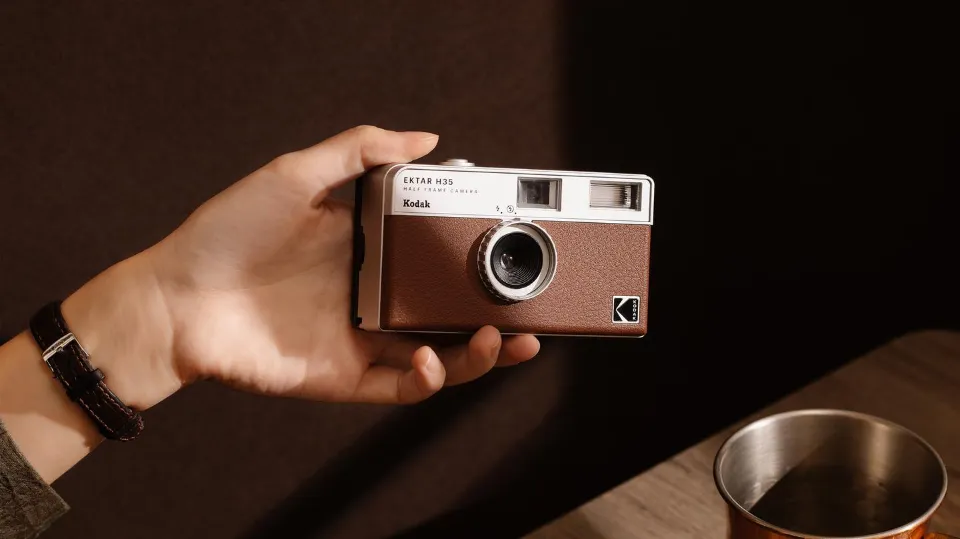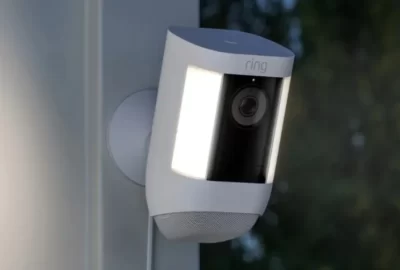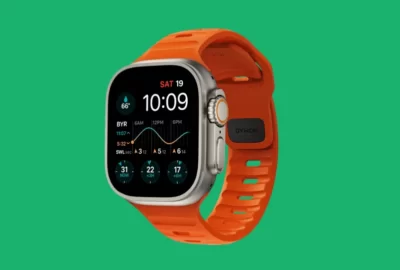15 Best Point and Shoot Film Camera in 2023: Top Picks
With the best point and shoot film camera, you can spur of the moment and capture life as it’s happening.
Point and shoot cameras became fashionable since their appearance, back in the early 1980’s.
Since then, the niche has grown and evolved, expanding notonly for hobbyists or for domestic use, which was for whom it was originally intended. Here are a few of the best options on the market.
- 1. Olympus Mju II
- 2. Yashica T4
- 3. Ricoh GR1V
- 4. Contax T2
- 5. Leica Minilux
- 6. Nikon 35Ti
- 7. Contax T3
- 8. Nikon L35af
- 9. Olympus XA2
- 10. Konica Big Mini F
- 11. Yashica T3
- 12. Olympus Stylus 150
- 13. Konica Pop
- 14. Konica Big Mini
- 15. Canon Sure Shot WP-1
This guide will assist you in sorting through all the options and selecting the best point and shoot film camera for your needs so that you can find one that fits both your needs and your preferences.
15 Best Point and Shoot Film Camera in 2023
1. Olympus Mju II
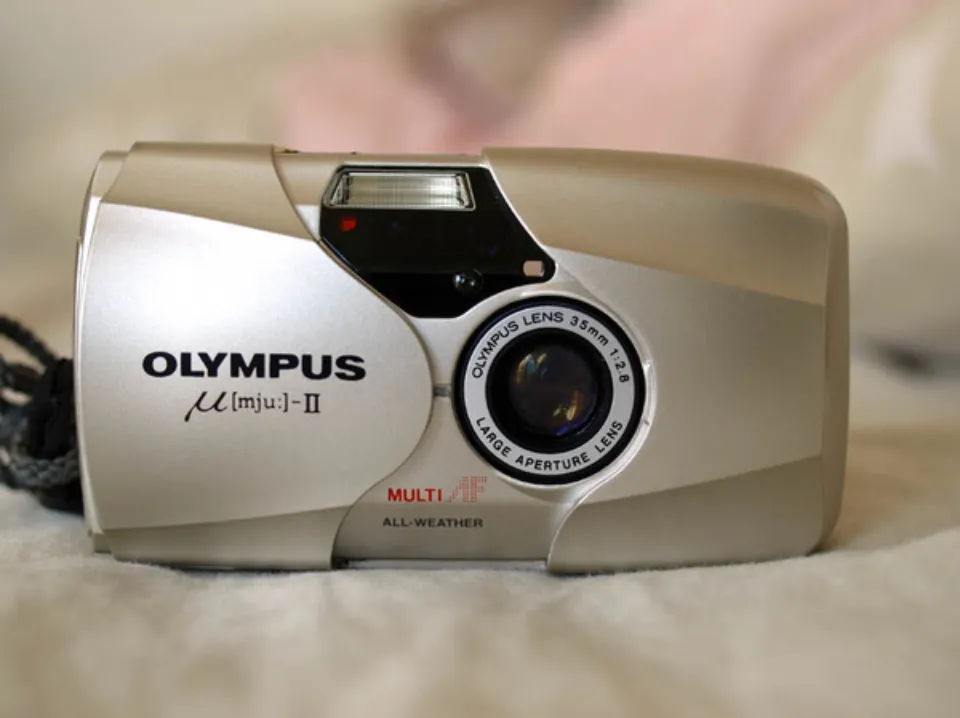
Specifications
- Lens: 35mm
- Elements: 4 elements in 4 groups
- Aperture: f/2.8
- Minimum focusing distance: 0.35m
- Exposure control: Automatic
- Focus: Autofocus
- Dimensions: 11 x 6 x 3.5 inches
- Weight: 15.3 ounces
Pros
- It is waterproof and hence usable in wet weather
- It has a self-timer that is useful when taking self-portraits
- Built-in flash useful in low-light conditions
- Red-eye reduction
Cons
- It is not zoomable
2. Yashica T4
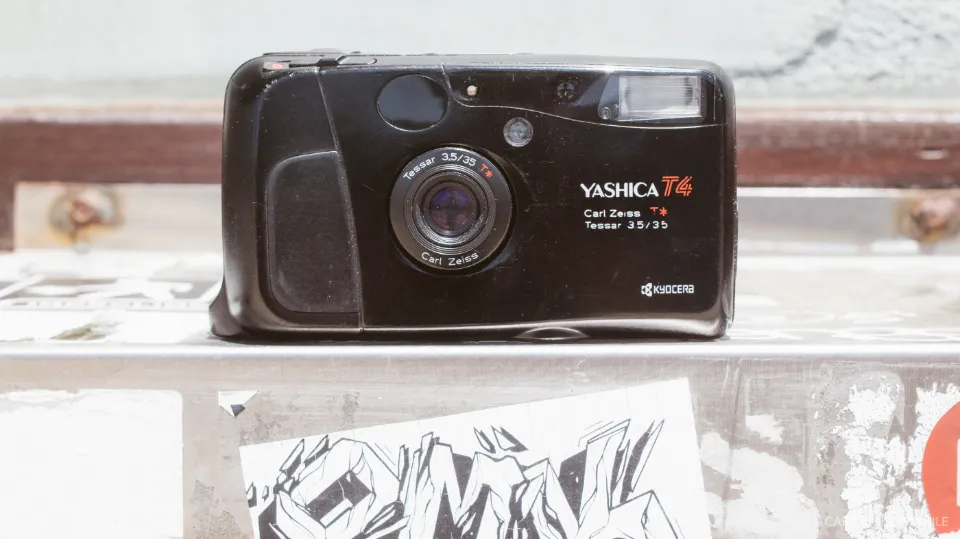
Specifications
- Lens: 35mm
- Elements: 4 elements, three groups
- Aperture: f/3.5
- Minimum focusing distance: 30cm
- Exposure control: Automatic
- Focus: Autofocus
- Dimensions: 45.87 x 25 x 10.63 inches
- Weight: 6 ounces
Pros
- Weatherproof hence suitable for any weather conditions
- Automatic backlight correction
- It’s designed to enable one-handed operation
Cons
- It has a slow aperture.
3. Ricoh GR1V
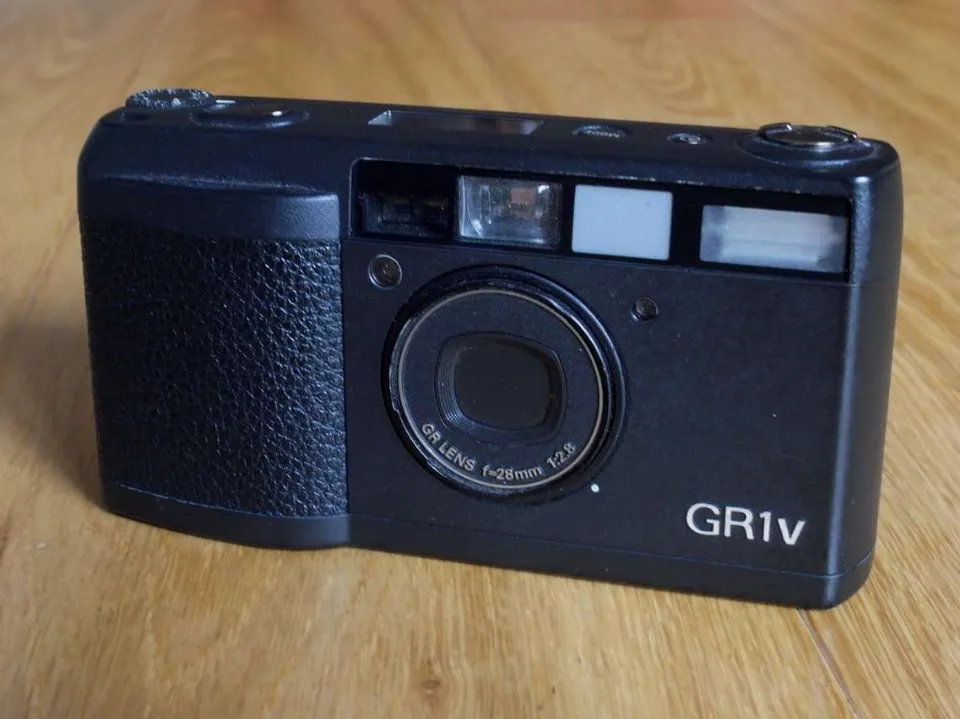
Specifications
- Lens: 28mm
- Elements: 7 elements in 4 groups
- Aperture: f/2.8
- Minimum focusing distance: 0.35m
- Exposure control: Automatic
- Focus: Autofocus
- Dimensions: 117 x 61 x 26.5 mm
- Weight: 6.2 ounces
Pros
- It has a fast start-up time (1.75 seconds)
- Allows manual ISO setting
- It has customizable focus modes
- The timer comes in handy when taking selfies
- You get date stamps on images
Cons
- A bit noisy when starting up or using autofocus
4. Contax T2
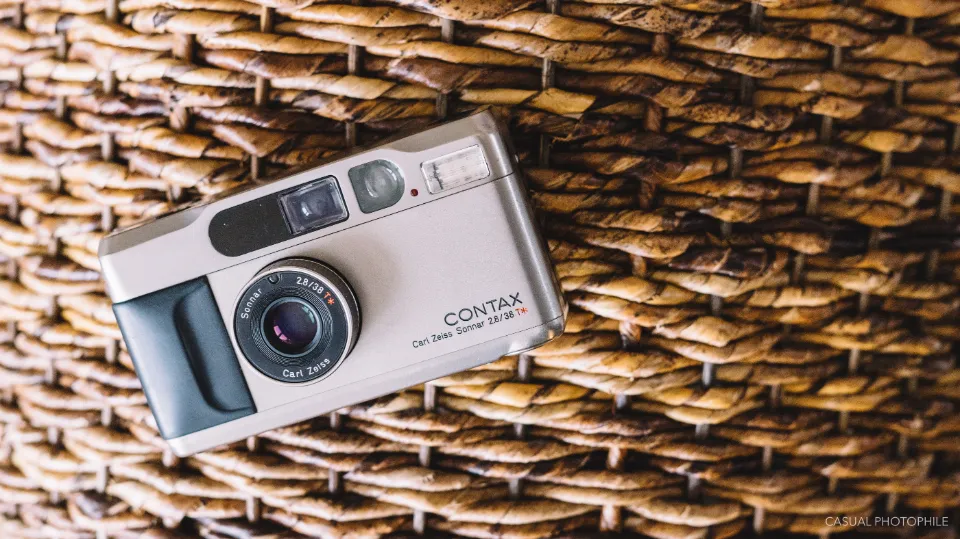
Specifications
- Lens: 35mm
- Elements: 5 elements, four groups
- Aperture: f/2.8
- Minimum focusing distance: 0.7m
- Exposure control: Automatic
- Focus: Autofocus
- Dimensions: 12 x 6 x 5 inches
- Weight: 13.6 ounces
Pros
- Anti-red eye option available
- It has a tough titanium body that is built like a muscle.
- Compact and lightweight making it suitable for traveling
- A sharp lens produces high-quality images
- It has a self-timer that makes taking selfies easier
Cons
- It is expensive
- Its maximum aperture (f/2.8) only works under low light conditions
5. Leica Minilux
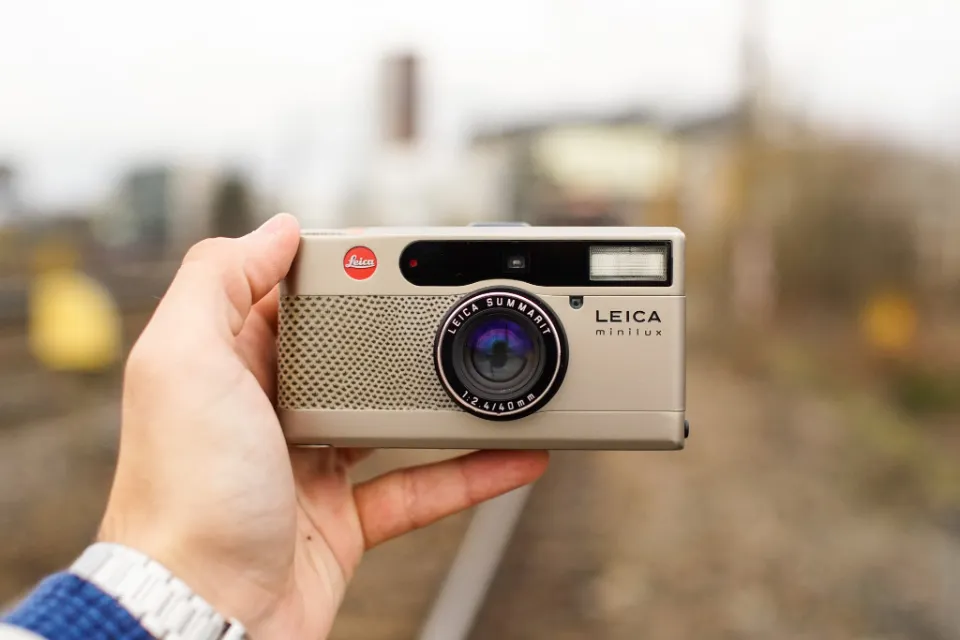
Specifications
- Lens: 40mm
- Elements: 6 elements in 4 groups
- Aperture:f/2.4
- Minimum focusing distance: 0.7m
- Exposure control: Automatic
- Focus: Manual and autofocus
- Dimensions: 4.9 x 1.5 x 2.7 inches
- Weight: 4.9 ounces
Pros
- The lens is protected from scratch by an automatic lens cap
- Multi-coated lens to protect against flare
- Dial at the top lets you customize several settings before you shoot
- Its inbuilt flash works great in low-light conditions
Cons
- Settings change back to default every time it is powered on.
- People who wear glasses may find it difficult to use the viewfinder.
6. Nikon 35Ti
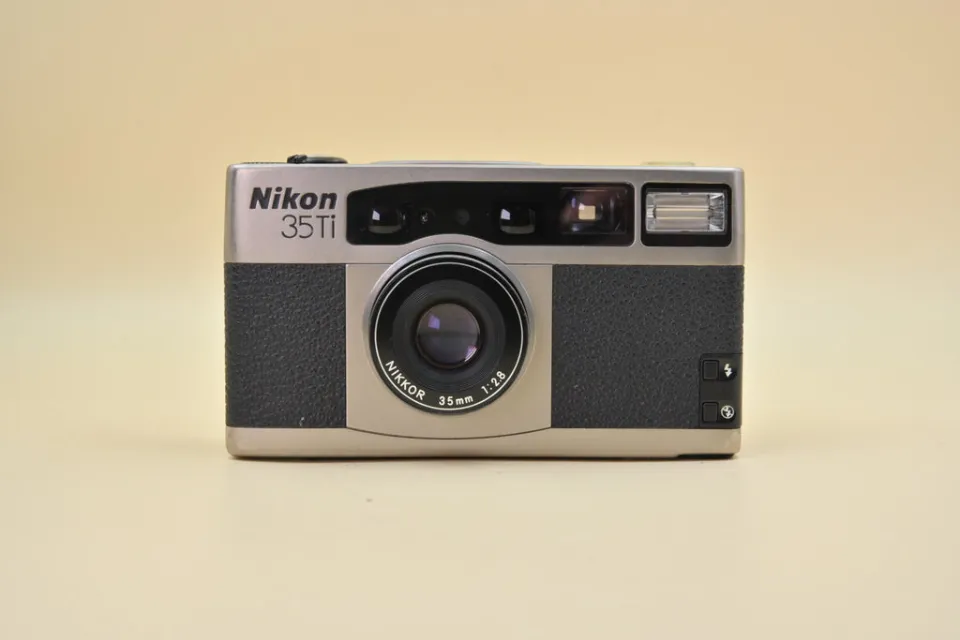
Specifications
- Lens: 35mm
- Elements: 6 elements, four groups
- Aperture: f/2.8
- Minimum focusing distance: 0.4m
- Exposure control: Automatic
- Focus: Manual focus, Autofocus
- Dimensions: 4.72 x 1.38 x 2.76 inches
- Weight: 21.1 ounces
Pros
- Adjustable aperture
- Accurate light meter
- Optional date printing
- You can monitor the number of frames
Cons
- Noisy autofocus
7. Contax T3
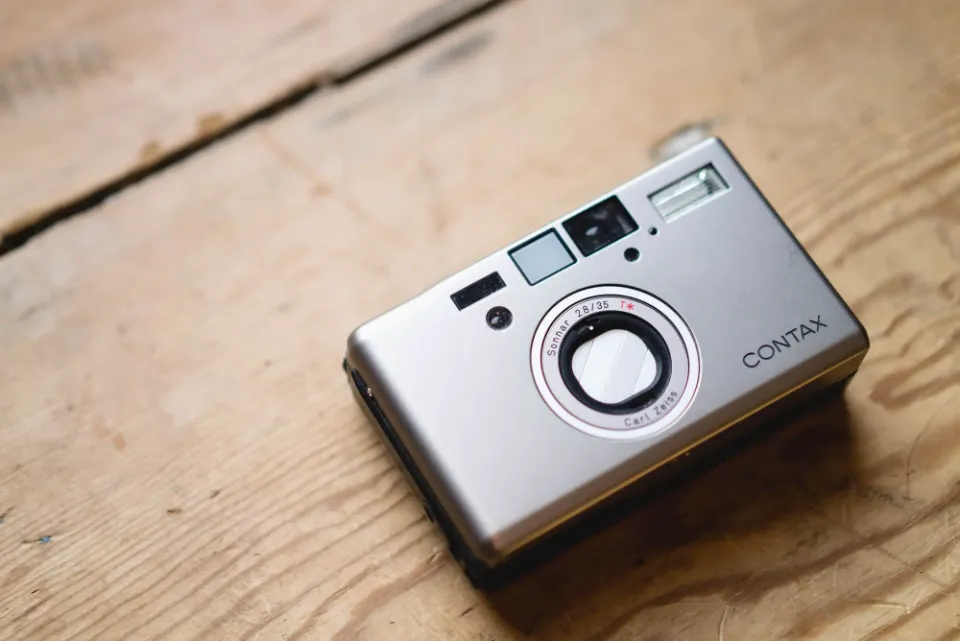
Specifications
- Lens: 35mm
- Elements: 6 elements in 4 groups
- Aperture: f/2.8
- Minimum focusing distance: 0.35m
- Exposure control: Automatic
- Focus: Manual focus
- Dimensions: 9 x 9 x 9 inches
- Weight: 2 pounds
Pros
- Smaller than its predecessor
- Fast focus
- Automatic lens cap to protect the lens from damage
- Auto red-eye reduction
Cons
- It is expensive
8. Nikon L35af
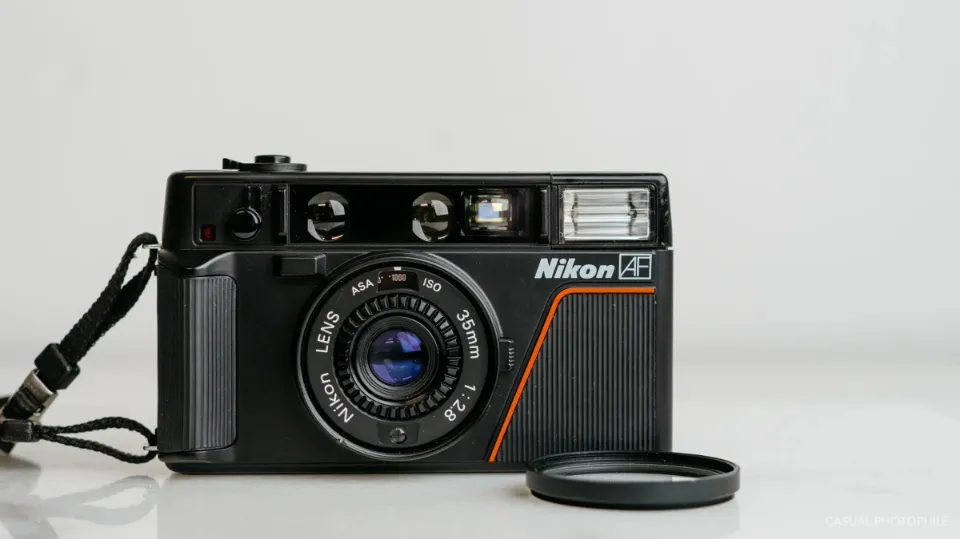
Specifications
- Lens: 35mm
- Elements: 5 elements in 4 groups
- Aperture: f/2.8
- Minimum focusing distance: 0.8m
- Exposure control: Automatic
- Focus: Autofocus
- Dimensions: 6 x 4.5 x 2.2 inches
- Weight: 14.4 ounces
Pros
- It comes with an inbuilt light meter
- Has a self-timer for self-portraits
- Small and light hence perfect for travel photography
Cons
- Adjusting the exposure is difficult as it involves
9. Olympus XA2
Specifications
- Lens: 35mm
- Elements: 4 elements in 3 groups
- Aperture: f/3.5
- Minimum focusing distance: 1.2m
- Exposure control: Manual
- Focus: Zone focus (3 zones)
- Dimensions: 6.7 x 4.5 x 4.3 inches
- Weight: 8 ounces
Pros
- Its clamshell design helps protect the lens
- Adjustable ISO lets you match different film requirements
- It is affordable
Cons
- Its shutter is sensitive and may take random photos when the clamshell is left open.
10. Konica Big Mini F
Specifications
- Lens: 35mm
- Elements: 4 elements in 3 groups
- Aperture: f/2.8
- Minimum focusing distance: 0.35m
- Exposure control: Automatic
- Focus: Autofocus
- Dimensions: 115 x 63 x 34.5 mm
- Weight: 6.3 ounces
Pros
- The aluminum shell is more durable and offers more protection
- The timestamp can be turned on or off depending on your preference
- Automatic exposure compensation
- It has a fast and accurate autofocus
Cons
- It is simple to press the incorrect button because the shutter and power buttons are close to one another.
- Low light or night photography may be hampered by flash since it is fully automatic.
11. Yashica T3
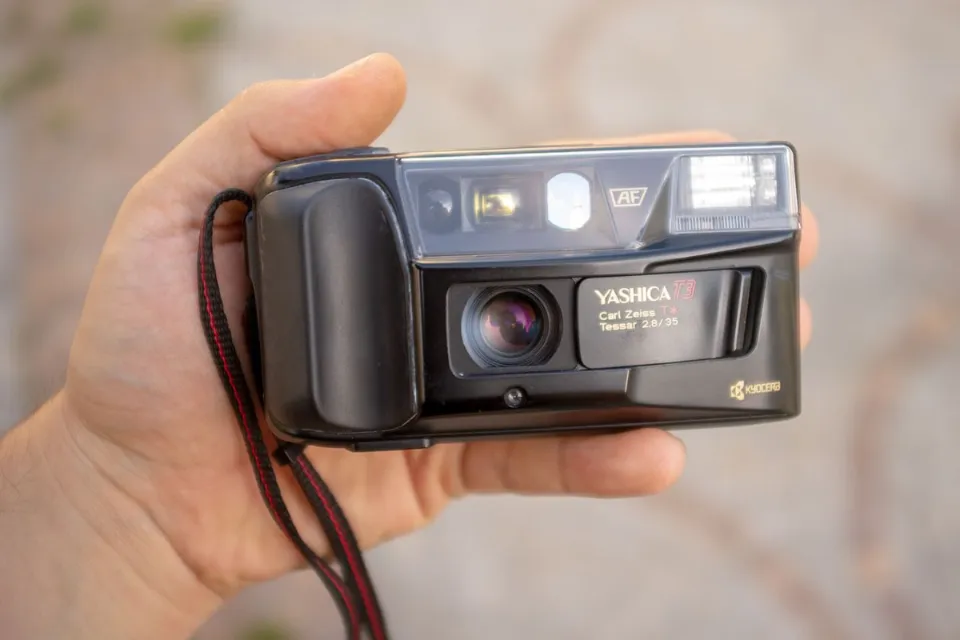
Specifications
- Lens: 35mm
- Elements: 4 elements in 4 groups
- Aperture: f/2.8
- Minimum focusing distance: 0.5m
- Exposure control: Automatic
- Focus: Autofocus
- Dimensions: 128 x 67.5 x 52 mm
- Weight: 9.7 ounces
Pros
- It is affordable
- A battery level indicator lets you know when it’s using too little power.
- multiple operating modes that can be used in various lighting situations.
- Fast flash recycle time
- Silent power on
- Quick auto-focus
Cons
- Hard to find replacement pieces in case of damage
- Not designed for single-handed operation
- Heavier and larger than its predecessor
12. Olympus Stylus 150
Specifications
- Lens: 35mm
- Elements: 8 elements in 4 groups
- Aperture: f/5.1
- Minimum focusing distance: 0.6m
- Exposure control: Automatic
- Focus: Autofocus
- Zoomable (4x)
- Dimensions: 6 x 4 x 3 inches
- Weight: 13.6 ounces
Pros
- Fast recycling time
- Red-eye reduction
- Focus lock
- All Weather
Cons
- It might be difficult to find replacement parts in the event of a repair because it is no longer in production.
13. Konica Pop
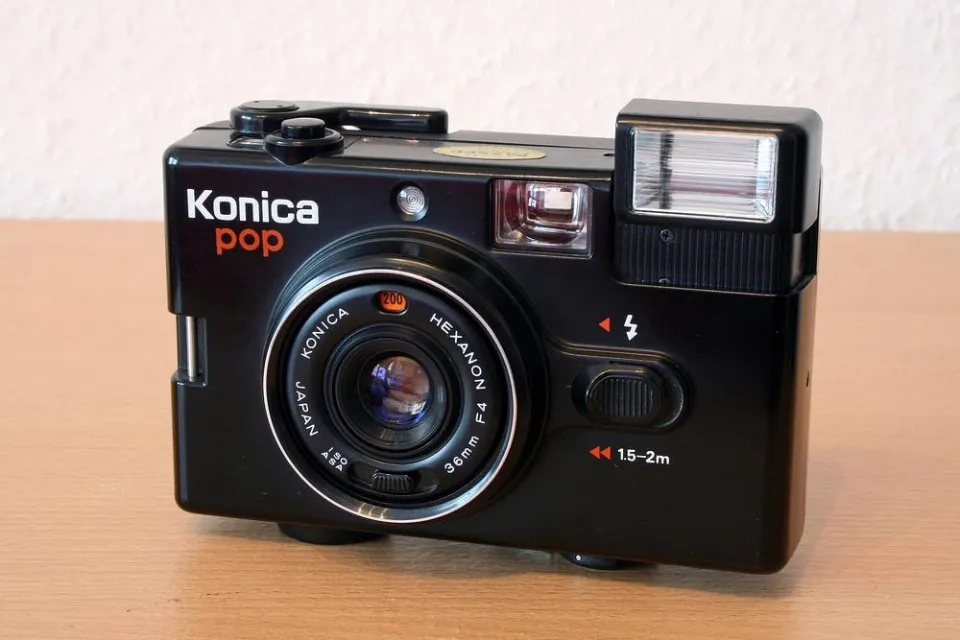
Specifications
- Lens: 36mm
- Elements: 4 elements in 4 groups
- Aperture: f/4
- Minimum focusing distance: 2.8m
- Exposure control: Automatic
- Focus:
- Dimensions: 116 x 70 x 47 mm
- Weight: 9.8 ounces
Pros
- You can customize the iso
- Excellent build quality
- Compact design
- Come in various colors
Cons
- Prone to light leaks
14. Konica Big Mini
Specifications
- Lens: 35cm
- Elements: 4 elements in 4 groups
- Aperture: f/2.8
- Minimum focusing distance: 35cm
- Exposure control: Automatic
- Focus: Autofocus
- Zoomable
- Dimensions: 11.5 x 3.4 x 6 cm
- Weight: 6.6 ounces
Pros
- faster and more precise focusing.
- High-quality build
- Quiet operation
- You can customize the exposure
Cons
- Some users find it difficult to use because of the shallow buttons.
- It is noisy when powered on
15. Canon Sure Shot WP-1
Specifications
- Lens: 32mm
- Elements: 6 elements in 6 groups
- Aperture: f/3.5
- Minimum focusing distance: 0.45m
- Exposure control: Automatic
- Focus: Autofocus
- Dimensions: 5.25 x 3.48 x 2.11
- Weight: 10.5 ounces
Pros
- It is waterproof and suitable for wet weather
- It can work with a tripod mount
- It has a self-timer for selfies
- It comes with an Auto Date feature
- The viewfinder is substantial.
- Because it is made of plastic, it is incredibly strong and light.
Cons
- It’s fragile
- It is large compared to other point and shoot cameras
What is a Point and Shoot Film Camera?
Point and shoot is as simple as its name suggests. These cameras are very basic, user-friendly, and portable. They are great for beginners and casual photographers who want to get the most out of their picture-taking experience without having to tinker with the settings.
Points-and-shoots typically have a very limited number of features, and they don’t allow you to tinker with settings like aperture or shutter speed. However, many people find that a point and shoot film camera is just right for them.
Why You Should Pick Point and Shoot Film Camera?
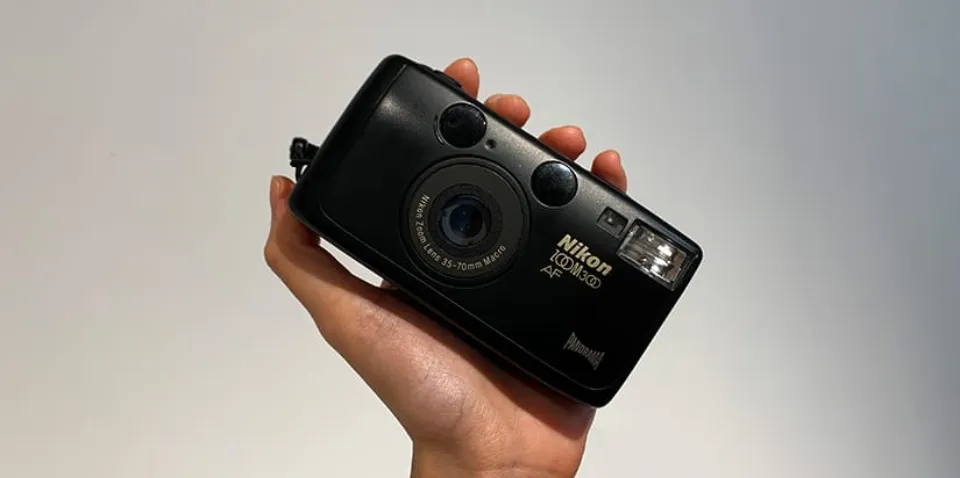
1. Auto Functions
With point and shoot film cameras, there is no need for a manual or directions to get great shots or understand features like shutter speed, aperture value, or focus lock as digital cameras.
They take care of it for you automatically. Simply place your subject in focus where you want it to be in the frame, and the camera will automatically adjust the shutter speed and aperture to take the perfect picture every time.
2. Affordability
One of the simplest and least expensive ways to start shooting film is with point and shoot cameras. The reason is obvious—these cameras are basic and lack some of the features of a DSLR, which can be expensive as we all know.
3. Quiet Operation
In terms of operation, point-and-shoot film cameras are very silent. They don’t make any obnoxious clicking noises. If you want to capture candid photos in a stealthy, quiet manner, this is ideal.
4. Portability
An excellent choice is a point and shoot film camera because of its portability and convenience. Many of these cameras are very lightweight and have small bodies. They are consequently simple to transport on trips or bring along for the day.
5. No Other Gears Needed
To take excellent pictures, you only need a point-and-shoot film camera. A tripod, an external flash, or extra lenses are not necessary.
6. Perfect for Beginners
A point and shoot film camera is the ideal choice for those just starting out in photography due to its simplicity of use. Point and shoot cameras have simplified settings that produce beautiful results almost every time without fail.
Conclusion on Best Point and Shoot Film Camera
The average person can now take photographs thanks to point-and-shoot film cameras. They are perfect for those who want to start taking photos because they are affordable and simple to use.
If you are not sure which brand to choose, here are some best options for you:
- 1. Olympus Mju II
- 2. Yashica T4
- 3. Ricoh GR1V
- 4. Contax T2
- 5. Leica Minilux
They give you a good idea of what you would experience if you were to use a professional camera. Making an informed purchase of a point and shoot film camera is made possible with the assistance of the reviews above.
Read More:

